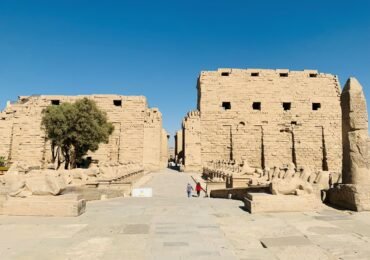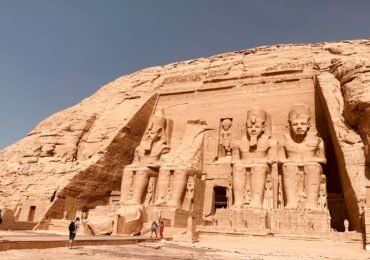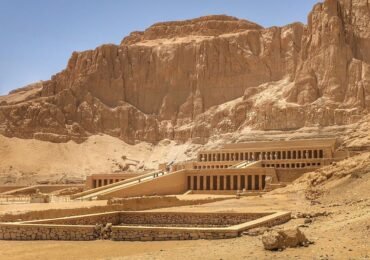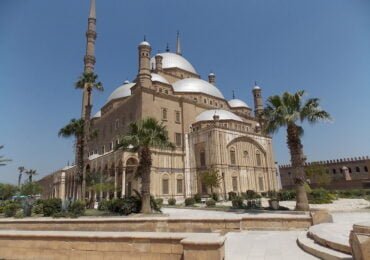Unveiling the Rich Tapestry of Egypt: A Journey Through Its History
Egypt, a land steeped in mystery and grandeur, has captivated the imaginations of historians, archaeologists, and adventurers for centuries. From the mighty pyramids to the enigmatic pharaohs, Egypt’s history is a testament to the remarkable achievements of a civilization that flourished along the banks of the Nile River. Join us on a captivating journey as we unveil the fascinating history of Egypt, a chronicle that spans over 5,000 years.
Ancient Egypt: Birth of a Civilization
The history of Egypt begins with the prehistoric period, when hunter-gatherer societies settled along the banks of the Nile. These early communities gradually developed agriculture, leading to the rise of settled farming villages. Around 3100 BCE, Egypt witnessed the unification of Upper and Lower Egypt under King Narmer, marking the beginning of the Early Dynastic Period. This unification not only brought political stability but also laid the foundation for a centralized government, religious beliefs, and cultural practices.
The Old Kingdom (2686-2181 BCE) is often referred to as the “Age of the Pyramids.” During this period, pharaohs such as Djoser and Sneferu constructed monumental pyramids as their tombs. The Great Pyramid of Giza, built for Pharaoh Khufu, stands as a testament to the incredible engineering and architectural skills of the ancient Egyptians. The Old Kingdom also saw the prominence of the sun god Re and the development of a complex funerary tradition aimed at ensuring the pharaoh’s safe passage into the afterlife.
The Middle Kingdom (2055-1650 BCE) marked a period of reunification and cultural renaissance following a time of political fragmentation. Pharaohs such as Mentuhotep II and Amenemhat III focused on revitalizing the economy, constructing grand monuments, and promoting artistic expression. It was during this era that a sense of social justice and concern for the common people emerged, as reflected in the famous literary work, “The Story of Sinuhe.”
The New Kingdom (1550-1070 BCE) witnessed the height of Egypt’s power and influence. Pharaohs like Thutmose III, Hatshepsut, and Ramses II expanded Egypt’s borders, creating a vast empire that stretched from Nubia in the south to the Euphrates River in the north. The New Kingdom was also marked by religious and cultural developments, including the worship of the deity Amun-Ra, the construction of grandiose temples at Karnak and Luxor, and the reign of the pharaoh Akhenaten, who introduced a monotheistic cult centered around the sun disk, the Aten.

The Pharaohs: Divine Rulers of Egypt
The pharaohs held a central role in ancient Egyptian society, serving as both political leaders and divine figures. They were believed to be the intermediaries between the gods and the people, responsible for maintaining cosmic balance and ensuring the prosperity of the kingdom. The concept of divine kingship granted the pharaohs immense power and authority over all aspects of life in Egypt.
While numerous pharaohs left their mark on Egyptian history, some stood out for their remarkable achievements. Queen Hatshepsut, one of the few female pharaohs, ruled during the 18th Dynasty and is remembered for her ambitious building projects, including the Mortuary Temple of Hatshepsut at Deir el-Bahari. Pharaoh Akhenaten, known for his religious reforms, attempted to shift Egypt’s polytheistic beliefs to the worship of a single deity, the Aten. However, his reforms were short-lived, and the traditional pantheon was restored after his death.
Perhaps the most famous pharaoh of all time is Ramses II, also known as Ramses the Great. His reign during the 19th Dynasty left an indelible mark on Egypt’s history. Ramses II constructed numerous temples, including the grand Abu Simbel, and signed the first known peace treaty with the Hittites, bringing stability to the region.

Funerary practices played a significant role in ancient Egyptian culture. The belief in the afterlife drove the construction of elaborate tombs, such as the pyramids, to ensure the pharaoh’s successful transition to the next world. The Valley of the Kings, located on the west bank of the Nile, served as the final resting place for many pharaohs, including Tutankhamun, whose tomb was discovered by Howard Carter in 1922, providing unparalleled insights into ancient Egyptian burial customs.
Temples, Tombs, and Monuments: Architectural Marvels
The ancient Egyptians left behind a rich architectural legacy that continues to awe and inspire visitors to this day. From the majestic pyramids to the sprawling temples, these structures showcase the ingenuity and artistic prowess of ancient Egyptian civilization.
The Great Pyramids of Giza, built during the Old Kingdom, are among the most iconic structures in the world. The pyramids were constructed as monumental tombs for the pharaohs and were accompanied by intricate burial complexes. The Great Pyramid of Khufu, the largest of the three pyramids, stands as a testament to the engineering skills of the ancient Egyptians. Its construction involved the precise alignment of massive limestone blocks, weighing several tons each.

The Temples of Karnak and Luxor, located on the east bank of the Nile in modern-day Luxor, are a testament to the grandeur of religious architecture in ancient Egypt. The Karnak Temple Complex, dedicated primarily to the god Amun-Ra, covers a vast area and consists of multiple temples, chapels, and halls. The Luxor Temple, connected to Karnak via the Avenue of Sphinxes, was dedicated to the rejuvenation of kingship and served as the setting for the annual Opet Festival.
Abu Simbel, located near the southern border of Egypt, is another architectural marvel that deserves special mention. The twin temples were built by Ramses II to commemorate his victory at the Battle of Kadesh and to demonstrate his power and divine connection. The temples were carefully relocated in the 1960s to save them from being submerged by the rising waters of the Nile due to the construction of the Aswan High Dam.
The Mortuary Temple of Hatshepsut, situated at Deir el-Bahari, stands as a tribute to the first female pharaoh of Egypt. The temple’s design showcases a unique architectural style with terraces, colonnades, and reliefs depicting the divine birth and achievements of Hatshepsut.

Lastly, the Sphinx, a mythical creature with the body of a lion and the head of a human, guards the pyramids of Giza. It is believed to represent the pharaoh Khafre and symbolizes the divine power and authority of the pharaohs.
Greek and Roman Egypt: Conquest and Cultural Synthesis
The history of Egypt took a significant turn with the arrival of Alexander the Great in 332 BCE. His conquest marked the beginning of the Hellenistic period in Egypt, blending Greek and Egyptian cultures. The Ptolemaic Dynasty, founded by Ptolemy I, ruled Egypt for nearly three centuries and witnessed the reign of the famous Queen Cleopatra VII.
Cleopatra VII, the last pharaoh of Egypt, is renowned for her political alliances and relationships with prominent Roman leaders, including Julius Caesar and Mark Antony. Despite her efforts to maintain Egypt’s independence, the kingdom eventually fell under Roman control in 30 BCE, marking the beginning of Roman Egypt.
Roman Egypt witnessed a fusion of Egyptian and Greco-Roman traditions. The Roman emperors contributed to the construction of temples and monuments, such as the Temple of Edfu and the Temple of Kom Ombo, which blended Egyptian and Roman architectural styles. The rise of Christianity in the Roman Empire also had a profound impact on Egypt, leading to the decline of ancient Egyptian religion and the emergence of Coptic Christianity.

Islamic Egypt: A New Era Begins
The 7th century saw the Arab conquest of Egypt, bringing Islam to the region. The founding of Cairo in 969 CE by the Fatimid Dynasty marked the beginning of a new era in Egyptian history. The Fatimids, of North African origin, established a vibrant capital that became a center of learning, art, and architecture.
The Fatimid period witnessed the construction of architectural masterpieces, such as the Al-Azhar Mosque and the Al-Hakim Mosque. These mosques showcased the unique blend of Fatimid, Abbasid, and local architectural styles. The Fatimids also promoted cultural and intellectual pursuits, making Cairo a renowned center of scholarship and attracting scholars from across the Islamic world.
The Mamluks, a class of military slaves, rose to power in the 13th century and ruled Egypt until the Ottoman conquest in 1517. The Mamluks left an indelible mark on Cairo’s architectural landscape, constructing magnificent religious complexes, including the Sultan Hassan Mosque and the Madrasa-Mausoleum of Sultan Qalawun. These structures exemplify the Mamluk architectural style, characterized by intricate decorations, soaring minarets, and grand domes.
Ottoman rule in Egypt began in 1517 and lasted for nearly four centuries. The Ottomans left their architectural imprint on Egypt, with notable structures such as the Mosque of Muhammad Ali in Cairo’s Citadel, which reflects the influence of Ottoman and Turkish architecture.

Modern Egypt: Independence and Beyond
In the early 19th century, Egypt witnessed the arrival of Napoleon Bonaparte and the French Expedition. Although short-lived, Napoleon’s presence opened Egypt to European influence, sparking interest in Egyptology and leading to the discovery of the Rosetta Stone. The Rosetta Stone was discovered in July 1799 by French soldiers during Napoleon’s invasion of Egypt. It was found in the town of Rashid (Rosetta), about 35 miles (56 km) northeast of Alexandria.
The Rosetta Stone is a dark-colored granodiorite stela inscribed with the same text in three scripts: Demotic, Hieroglyphic, and Greek. The Demotic script was a cursive script used by the Egyptians for everyday writing. The Hieroglyphic script was used for monumental inscriptions and religious texts. The Greek script was the language of government and administration in the Ptolemaic period, which lasted from 305 to 30 BC.
The discovery of the Rosetta Stone was a major breakthrough in the decipherment of hieroglyphs. By comparing the Greek text to the Demotic and hieroglyphic texts, scholars were able to identify the phonetic value of many hieroglyphs. This led to a gradual understanding of the ancient Egyptian language and culture.
The Rosetta Stone is considered to be one of the most important archaeological discoveries ever made. It is a key to understanding the ancient Egyptian world and has revolutionized our knowledge of this fascinating civilization.
Muhammad Ali Pasha modernized Egypt in the early 19th century, but his successors led the country to bankruptcy. Britain established a protectorate over Egypt in 1882, which ended in 1922. King Farouk’s corruption and incompetence led to his overthrow in 1952, marking the end of the Muhammad Ali dynasty.
Arab Republic of Egypt in 1952
Egypt has undergone significant political, economic, and social change since it declared itself a republic in 1952. The country has been ruled by a series of authoritarian governments, but there have also been periods of democratic reform.
The early years of the republic were marked by the rule of Gamal Abdel Nasser, a charismatic and popular leader. Nasser implemented a number of socialist policies, such as land reform and nationalization of key industries. He also played a leading role in the Arab nationalist movement.
Nasser’s successor, Anwar Sadat, moved Egypt away from socialism and towards a more market-oriented economy. He also signed a peace treaty with Israel in 1979, which was highly controversial in the Arab world.
Arab Spring in 2011
Hosni Mubarak came to power in 1981 after Sadat was assassinated. Mubarak ruled Egypt for 30 years, during which time the economy grew but political freedoms were restricted. In 2011, Mubarak was overthrown in a popular uprising that was part of the Arab Spring.
The post-Mubarak era has been a period of turmoil and uncertainty. In 2012, Mohamed Morsi of the Muslim Brotherhood was elected president. However, Morsi’s rule was unpopular, and he was overthrown by the military in 2013.
Abdel Fattah el-Sisi, the current president of Egypt, has taken a hardline approach to dissent. He has cracked down on the Muslim Brotherhood and other opposition groups. He has also strengthened the military’s role in government.
Despite the political challenges, Egypt’s economy has grown in recent years. The country has also become a more important player in regional and international affairs.

